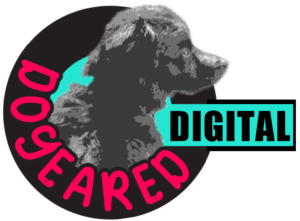From building awareness through content to optimizing conversion funnels to conveying product value, the marketing machine has many gears.
While areas like content, growth and product marketing overlap, misunderstanding core distinctions between them can duplicate efforts or create gaps that stand in the way of real results.
This guide will walk you through the unique priorities and metrics shaping how each of the roles grabs hold – and retains – audience attention. By getting acquainted with each discipline’s marketing goals, tasks, and KPIs, marketers and executives alike can get an idea of where they should be investing their time and money.
Content Marketing
What is Content Marketing?
Content marketing is the art of storytelling, aimed at building brand authority and nurturing customer relationships. It’s about crafting content that resonates with your audience, establishing your brand as a thought leader, and creating a loyal customer base.
Content marketing involves creating and sharing valuable, relevant, and consistent content to attract and retain a clearly defined audience. The goal is to drive profitable customer action by developing quality content that speaks to their needs and interests. This content can take many forms, including blogs, videos, podcasts, ebooks, case studies, how-to guides, and more.
By taking an audience-first approach, content marketers seek to build trust and become a reliable resource for customers. The focus is on delivering content optimized for the target audience rather than overt sales and promotions. Done well, content marketing enables sustainable business growth by capturing qualified leads and converting them into long-term customers.

Key Tasks
- Setting Up Your Content Strategy: Identify your audience, select content types, and plan publishing schedules.
- Researching Topics and Keywords: Discover engaging subjects and relevant keywords for better search engine visibility.
- Creating the Content: Produce diverse content like articles, graphics, or videos that captivate your audience.
- Optimizing Content for Search Engines: Enhance content with appropriate keywords and meta tags for improved search rankings.
- Publishing the Content: Distribute content across suitable platforms like websites, social media, and newsletters.
- Promoting Your Content: Increase content visibility through social media shares, email campaigns, or paid ads.
- Distribution Strategy: Determining the right channels across paid and organic, to publish your content to ensure your target audience sees and responds to it. This also comprises repurposing and repackaging content to meet the best practices on all of the channels where it will be disseminated.
- Engaging with Your Audience: Build community by interacting with the audience via comments and messages.
- Updating and Repurposing Content: Keep content fresh by updating information and repurposing into new formats.
Key Performance Indicators (KPIs)
- Engagement Metrics: Tracks user interaction like time on page, pages per session, and social shares.
- Lead Generation: Assesses how content converts visitors into leads through actions like form submissions or content downloads.
- Content Shares: Counts how often content is shared on social media, indicating audience engagement.
- Audience Growth: Measures the increase in subscribers or social media followers over time.
- Conversion Rate: Measures the percentage of visitors completing desired actions (e.g., purchases, sign-ups).
- SEO Performance: Tracks search engine rankings, organic traffic, and backlinks to assess content visibility.
- Traffic Metrics: Measures the number of visitors, including overall site traffic and traffic by channel or specific pages.
- Bounce Rate: Indicates the percentage of visitors leaving after viewing only one page, lower rates suggest more engaging content.
Growth Marketing
What is Growth Marketing?
Growth marketing combines creativity with analytics to identify and leverage growth opportunities. It’s an experimental approach, focusing on optimizing the marketing funnel to maximize customer lifetime value.
The goal of growth marketing is rapid business expansion through scalable tactics and strategies. Growth marketers specialize in acquisition—bringing as many qualified leads into the top of the funnel as possible. They analyze customer journeys to reduce friction and optimize conversions across every stage. Common growth activities include SEM, SEO, social media marketing, referral programs, partnerships, lifecycle messaging, and more.
Leveraging data and testing are integral to growth marketing. Through A/B testing and experimentation, growth marketers determine optimal pricing, positioning, channels, and creatives. Rather than large upfront launches, they take an iterative approach to roll out, measure, and refine campaigns over time. While risky, this methodology enables data-backed decision making for efficient growth. The focus is on scalability, sustainability, and cost-effectiveness in order to exponentially increase customers and revenue.

Key Tasks
- Identifying Growth Channels: Determine effective channels for reaching your audience, including digital platforms and traditional media.
- Developing Growth Strategies: Formulate strategies for customer acquisition and retention, utilizing customer behavior and data insights.
- A/B Testing: Conduct tests on web pages, ads, and emails to see what resonates with your audience.
- Data Analysis and Metrics Tracking: Monitor key metrics like acquisition costs and customer lifetime value to guide smarter marketing decisions.
- Partnership and Network Building: Collaborate with brands, influencers, and industry experts to expand reach and position yourself within your niche.
Key Performance Indicators (KPIs)
- Customer Acquisition Cost (CAC): Measures the cost to acquire a new customer, crucial for evaluating the efficiency and scalability of marketing strategies.
- Lifetime Value of a Customer (LTV): Estimates the total revenue expected from a customer over their relationship with the business.
- Retention Rate: Measures how well a business keeps its customers over time, a key indicator of customer satisfaction.
- Churn Rate: Calculates the rate at which customers stop doing business, important for identifying issues in customer retention strategies.
- Revenue Growth: Tracks the increase in revenue, directly reflecting the success of growth marketing efforts.
- Lead-to-Customer Ratio: Measures the effectiveness of converting leads into paying customers.
Product Marketing
What is Product Marketing?
Product marketing is all about understanding target customers, discerning their true needs, and conveying differentiated value. With thorough market research, product marketers find pain points that their product is uniquely positioned to solve. Beyond showcasing product features, product marketers figure out exactly where the product will fit into consumers’ lives and leverage emotional connections.
The core role of product marketing is connecting customers with the solutions they seek. Product marketers act as the voice of the market within an organization, providing critical insights that influence product development. They develop positioning and messaging that resonates with buyers based on intimately understanding target segments.
Product marketers also craft marketing content like data sheets, demos, and buyer’s guides that enable sales teams to effectively communicate value. They may identify new market opportunities to expand the customer base. Acting as strategists, product marketers map out plans for bringing offerings to market and driving adoption. This requires close cross-functional collaboration with groups like engineering, sales, and customer success. By obsessing over the ideal buyer, product marketers bridge the gap between customers needs and the company’s solutions. Aligned go-to-market plans, impactful content, and sales enablement are key outputs of product marketing.

Key Tasks
- Market Research: Analyze market trends, customer needs, and competitor strategies to inform product development.
- Product Positioning and Messaging: Craft unique messaging to highlight product features and market differentiation.
- Product Launch Planning: Coordinate launch timelines, marketing channels, and promotional activities.
- Content Development: Create concise product descriptions, sales materials, and promotional content that will attract your target audience.
- Customer Feedback Loop: Gather and analyze customer feedback for product improvement, refining your strategy to better suit audience needs.
- Performance Tracking and Analytics: Monitor how the product is being received to guide future strategies.
Key Performance Indicators (KPIs)
- Market Share: Indicates the product’s share in the market, showing its competitiveness and customer preference.
- Product Revenue: Measures the total revenue generated by the product.
- Conversion Rate: Tracks the percentage of prospects converting to customers.
- Customer Satisfaction (CSAT) Score: Evaluates customer satisfaction, providing insights into product quality and market fit.
- Return on Marketing Investment (ROMI): Calculates the profitability of marketing efforts.
- Customer Retention Rate: Measures the rate of repeat purchases, measuring customer loyalty and product appeal.
- Net Promoter Score (NPS): Gauges customer loyalty and the likelihood of product recommendation, reflecting brand strength.
| Content Marketing | Growth Marketing | Product Marketing | |
| Definition | Creating and distributing valuable, relevant, and consistent content to attract and nurture a clearly defined audience to drive profitable customer action | Pursuing rapid business growth through scalable acquisition strategies, conversion rate optimization, and data-driven decision making | Bridging the gap between customer needs and company’s solutions through market research, buyer understanding, positioning, messaging strategy, and sales enablement |
| User Journey | Awareness, Consideration, Decision | Consideration, Decision, Customer Retention | Awareness, Consideration, Decision |
| Core Responsibilities | Conduct research to create valuable content across formats that educates, inspires and attracts target audience. Manage content on search, social, email, blog/website, and more. | Manage data-driven programs to efficiently acquire customers, optimize conversion funnels, analyze performance, run experiments to scale. | Conduct market research for positioning, craft messaging and value props, create sales enablement content and tools, inform product roadmap. |
| How Success is Determined | Increased audience reach/engagement, brand awareness/favorability, conversion rates, lowered CAC | Positive unit economics, lowered CAC, increased conversion rates, reduced churn, maximized LTV | Product-market fit, customer adoption/retention, sales team productivity, competitive differentiation |
How do you balance content, growth, and product marketing teams?
Content, growth, and product marketing, though distinct, are deeply interconnected. Content marketing lays the groundwork by building brand presence and engaging the audience. Growth marketing takes this foundation to experiment and scale effectively. Product marketing, with its deep understanding of customer needs, ensures that the products align well with the market, supported by the narratives crafted by content marketing.
These disciplines, when synchronized, create a cohesive and comprehensive marketing strategy. The insights from product marketing can feed into content creation, while growth marketing tactics can amplify this content and drive product adoption.
Achieving an effective balance between content, growth, and product marketing requires clear alignment on goals and constant communication across teams. While they have different areas of focus, ensure collaboration opportunities exist between functions. Growth marketers can leverage compelling content, product marketers inform content themes, and both can provide feedback to refine positioning.
Overarching strategies and campaigns should have integrated plans spanning the disciplines to ensure consistency in messaging and audience targeting. Invest in processes and systems that facilitate transparency and access to insights, performance data, and planning documents across groups. Most importantly, foster a collaborative culture focused on collective success over functional silos. With a shared vision, seamless hand-offs between teams, and embracing an integrated approach—you equip your marketing machine for maximum impact.
What if you manage content, growth, and product marketing all by yourself?
When juggling multiple marketing responsibilities alone or with a small team, strategy and prioritization are key. Start by clearly defining your target customer profile through buyer personas and market research. This knowledge of your ideal customer will drive decisions across all three disciplines.
With limited bandwidth, you must identify the highest potential growth channels and content types to focus your energy. Pitch low-funnel offerings like ebooks, demos, and free trials to provide value and scale growth. Leverage organic social channels which lend well to an agile approach.
Streamline efforts by repurposing content across formats and channels. Turn a blog post into a video or podcast episode, promote webinars across paid and owned channels, and extract snippets for social. Foster user-generated content by engaging customers.
Maintenance mode is acceptable in early stages. Set basic metrics and processes for lower-priority areas while you focus on the channels and content with most traction. Document strategies in playbooks to maintain continuity as you expand.
Most importantly, remain nimble and responsive as the solo marketer or small marketing team. Tune into customer signals, pivot based on learnings, and allow the market to guide you. With strategic priority-setting and maximizing synergies in a lean way, you can balance it all.
Synchronizing strategies to build a unified marketing machine
While content, growth, and product marketing have distinct priorities, their strategies must intertwine for impactful results. Content builds brand awareness and loyalty. Growth experiments identify what resonates and scales. Product ensures alignment with customer needs.
Unified around the customer, inspire awareness through valuable content, optimize adoption experience leveraging growth insights, and convey product value clearly – every step quantified by data.
Though responsibilities differ, harness the collective expertise across content, growth, and product marketing. Strategic coordination combines these disciplines’ strengths into a single formidable growth engine that acquires, delights and retains customers.

